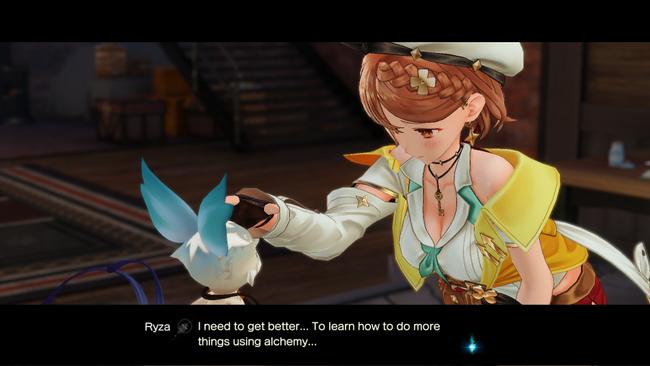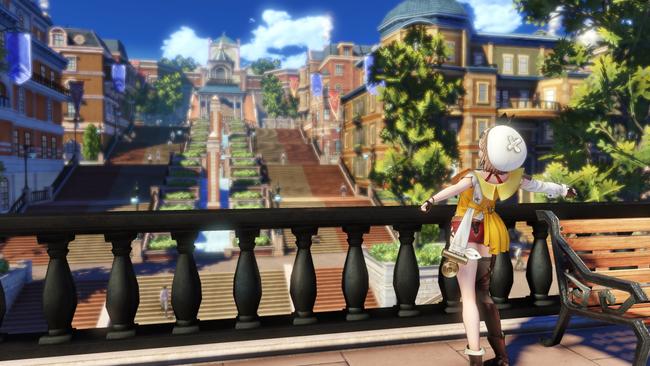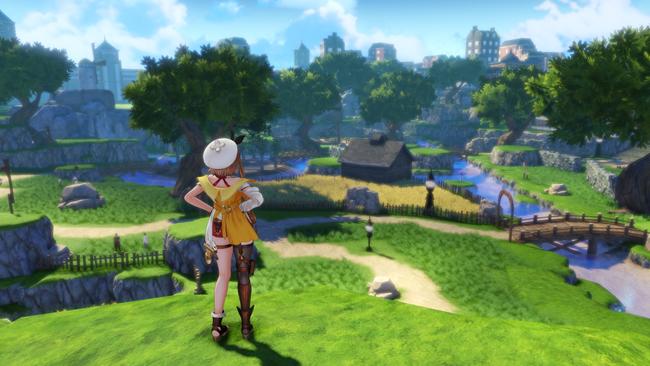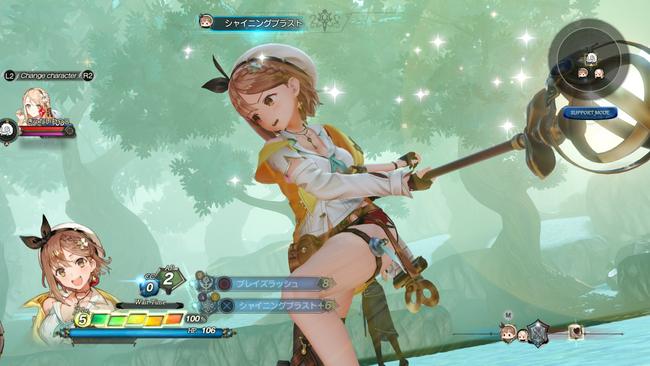
Atelier Ryza 2: Lost Legends and the Secret Fairy Preview
I have no idea how Gust has managed to keep Atelier an annual franchise without any noticeable dip in quality. If anything the games have only gotten better since the release of Atelier Lulua. After the first Ryza title was both a surprising financial and critical success, I had high hopes that the next game in the series would be able to use that to improve the core mechanics across the board. I was not expecting however that the next game in the series would be a direct sequel, which the series hasn’t seen since Atelier Iris.
I quite enjoyed Ryza’s introductory title, and so did our own Elizabeth Henges in her review, so I was pleasantly surprised to see the young adventurer given another chance in the spotlight. Atelier Ryza 2: Lost Legends & The Secret Fairy is releasing in the west in late January 2021, and Koei Tecmo has given RPG Site the opportunity to play a preview build of the game a few months beforehand.
I also had the chance to ask some questions to Gust Brand Manager and Atelier Ryza Producer Junzo Hosoi, so also feel free to read our chat.

My initial impressions of the game have been quite positive. Three years after the events of the previous game, Ryza leaves the island she was born and raised on to take a visit to the royal capital city of Ashra-am Baird. It was upon leaving her quaint little island, which served as the hub for her first adventure, that I was greeted with the massive increase of scale this sequel was aiming for. The average map size of each area feels like it has doubled, and I can happily say that this wasn’t a case of quantity over quality. The level design is a lot more natural, and there’s a noticeable bump in the visual quality to create a more immersive experience.
The Atelier games always have a charming aesthetic, but their year-long development is always very apparent. As a fan since Atelier Ayesha Plus, I have always accepted this, because I keep coming back to these for the charming casts of characters and the relaxing gameplay loop. Ryza 2 might still have the same stiff animations seen in the game’s cutscenes, but there was an effort put into the important part of the game: Adventuring. The environments are packed with insane amounts of detail and look absolutely stunning. When I entered the front gates of the capital for the city for the first time I had to stop and just take time to explore every nook and cranny I could.

Atelier hub cities have never really been visual spectacles, and this is the first time I’ve felt one feels lived in. The exterior and interior of buildings have more detail than ever before, and I have no idea how they packed so much detail here with just a year of development. A great little touch I noticed was how the game responds to weather. When exiting Ryza’s new apartment I discovered that the city streets were being pelted by a thick coat of rain. I thought nothing of this until I walked into another area and saw that the rain had subsided, leaving puddles spread around town. This seems like an unimportant detail, but little touches like this go along way in making you feel a part of an RPG’s world. If I were to offer a bit of critique here, it would be that I wish the NPC character models had received a bit more variety, but that’s a minor nitpick.
Ryza 2 is also a lot quicker to get your adventure started than the original game. After the prologue to introduce the new setting and how the original cast has matured in the last three years, you are given almost free reign to explore the massive environments to your heart's content. This game does what all the best game sequels do and feels designed around the idea that it expects you to have already played the first game. There are still a bit too many tutorials that can break up the pace, but the game respects the audience where it matters. Fast travel via the world map is unlocked sooner than before, and even before that, the game doesn’t really stop you from exploring and gathering as much as you see fit. Gust really wanted to flex their bigger budget for this aspect of Ryza 2, giving you more natural ways to explore the bigger environments.
When met with a cliff overlooking a small lake, I was easily able to jump in and swim around. I could gather new kinds of materials while swimming, and later in the game, you are even able to dive underwater to explore even more. You can climb up cliffs, use a grappling hook to cross gaps in dungeons or the overworld, and much more. On paper, this seems like just a flashy way to get to around, but they serve an important purpose for the player’s enjoyment. Ryza 1 was a game meant to be about adventure, that was somewhat held back by the series formula. Ryza 2 has completely embraced the spirit of adventure. I felt the urge to explore not just because I had to, but because I wanted to.

The only spots where the game prevents you from exploring right away are when it requires you to have a specific piece of adventure gear. The best new addition I’ve found so far is that Ryza (and by association, the player) can see what materials an object on the overworld can give her depending on the gathering tool she is using. This little quality of life improvement might not seem like a big deal, but it was a necessity I didn’t even know I needed when the scale of the world increased. Dungeons have also seen a noticeable buff, and at the moment this seems like an improvement. Early on Ryza is given a compass that can point her in the direction of memory fragments, and she uses these in her journal to uncover what happened in these ancient civilizations. When you succeed, you unlock new recipes and gain SP. I hope that this doesn’t grow stale in the long run, but as of now, I appreciated that there were any new mechanics at all.
The formula of the series no longer holds back adventuring, but Gust hasn’t lost sight of their traditional gameplay loop. Gathering tools all have levels now that can be upgraded with “SP” you obtain from exploring, doing quests, and alchemy. You don’t gain levels in alchemy anymore, but instead, use a new point system that can be used to unlock new recipes and improve how you engage with your adventure. This free-form upgrade system serves as a good fit for the new free-form exploration.
Ryza’s combat was a beautiful yet chaotic attempt to breathe new life into the series. This was a success in my opinion and was my second favorite battle system in the series after Atelier Escha and Logy. As of now, I’m happy to say that this has more engaging combat than its predecessor. Things are more streamlined in small ways, the UI is cleaner, the animations are flashier, switching between characters on the fly feels more natural, and it feels like there’s a greater focus on player input. Attacks now have the player mash with the character in control, and blocking at just the right time to nearly nullify most damage and get a new boost in Action Points felt great.

This preview has seemed glowing so far, and that’s because of how pleasantly surprised I am to see one of my favorite series improving upon the last iteration this much. However, I played this on PC and at the moment I was disappointed to see the graphic options were lacking. I wasn’t sure what exactly was wrong with it at first, but the visuals looked unfinished and the camera seemed to have issues keeping up with Ryza. There was no launcher and I had to dive into the system files to find a read me that explained that you can press the escape key to open up the graphical menu. I had found that the game had defaulted to 720p, but at the current moment was maxed out at 900p. Usually, I play these games on Switch so visuals aren’t everything, but I’ve spent a lot on my gaming PC so I’d hope to use the specs to play a game like this as nice as possible. At the moment I don’t bring this up as a concrete negative because I know this PC build is still a work in process. There are around two months left to fix the graphical issues and small hiccups, but as it stands right now this was the only part that really bothered me.
Calling Atelier Ryza 2 a “bigger and better” version of the Atelier Ryza formula seems obvious and cliche, but I’m struggling to come up with any other way to describe it. Obviously, there could be hitches and flaws in the final version of the game, but as it stands now I feel there is enough time to iron out any minor issues I found in this pre-release build. I’m excited to see that Ryza’s second big adventure looks to be an overall improvement than her first, and hope this is a sign that the series is going to continue to take big steps forward with subsequent iterations.